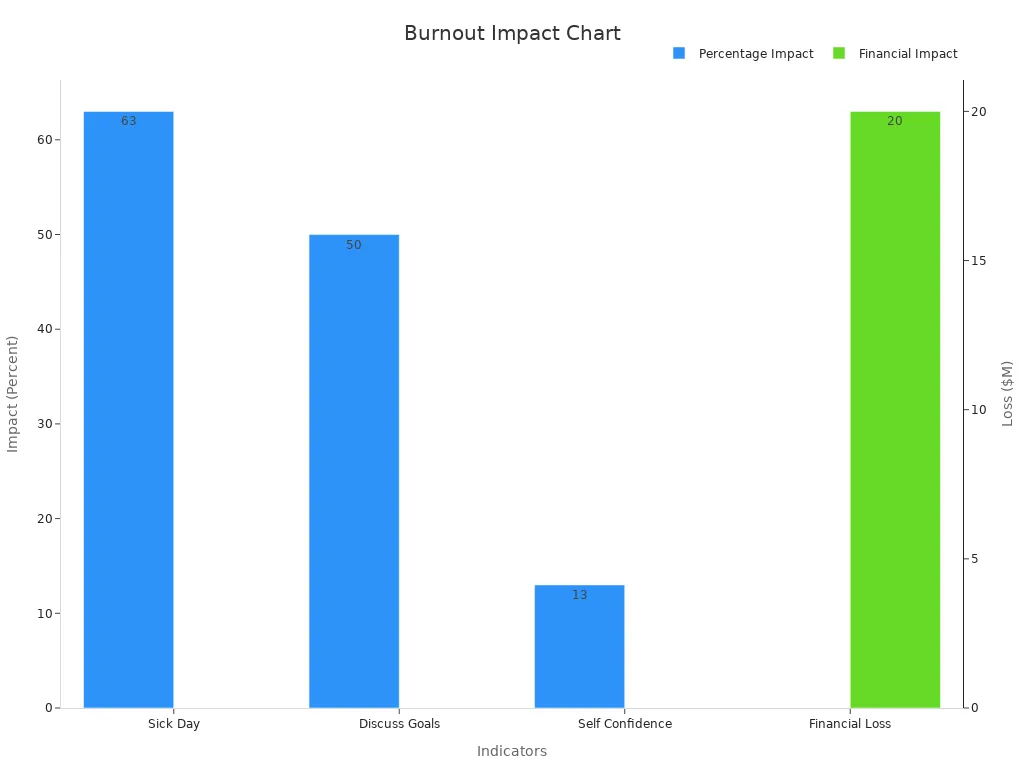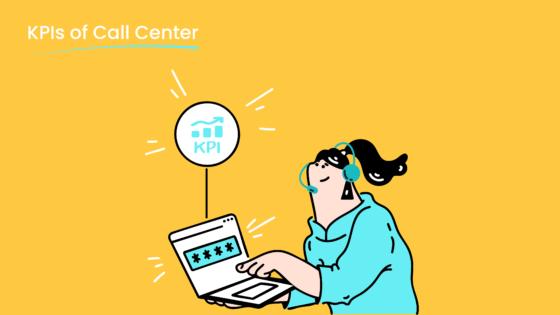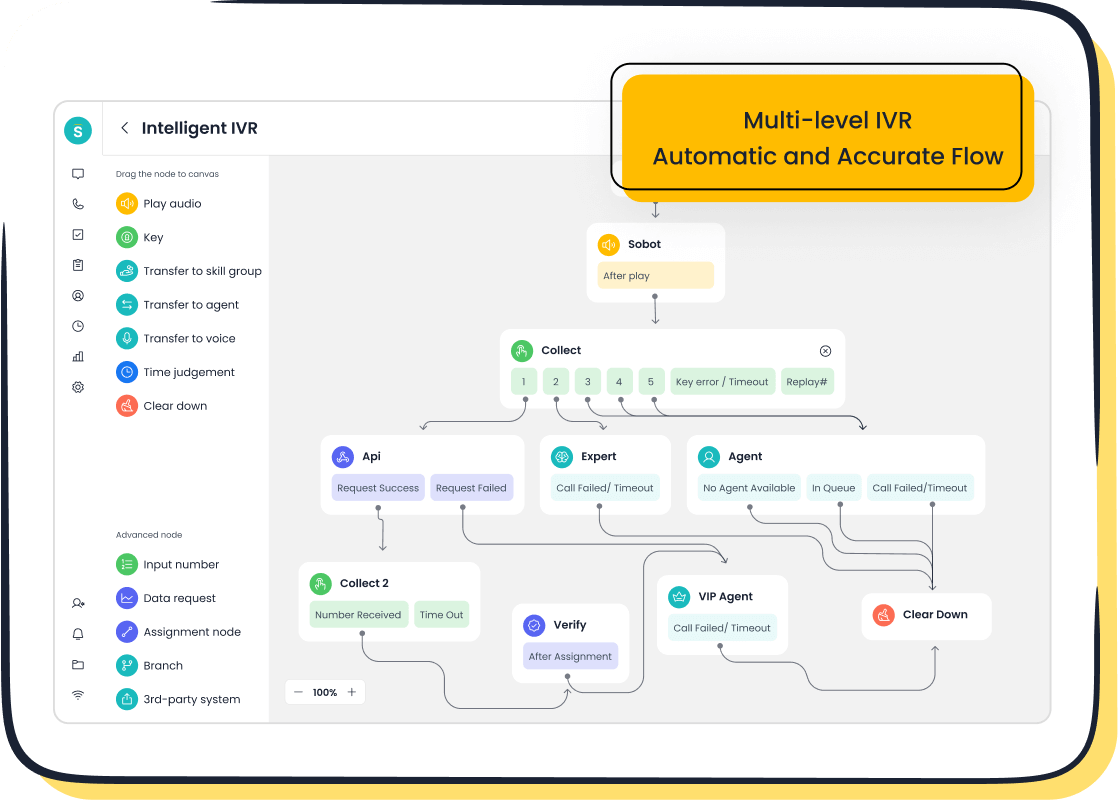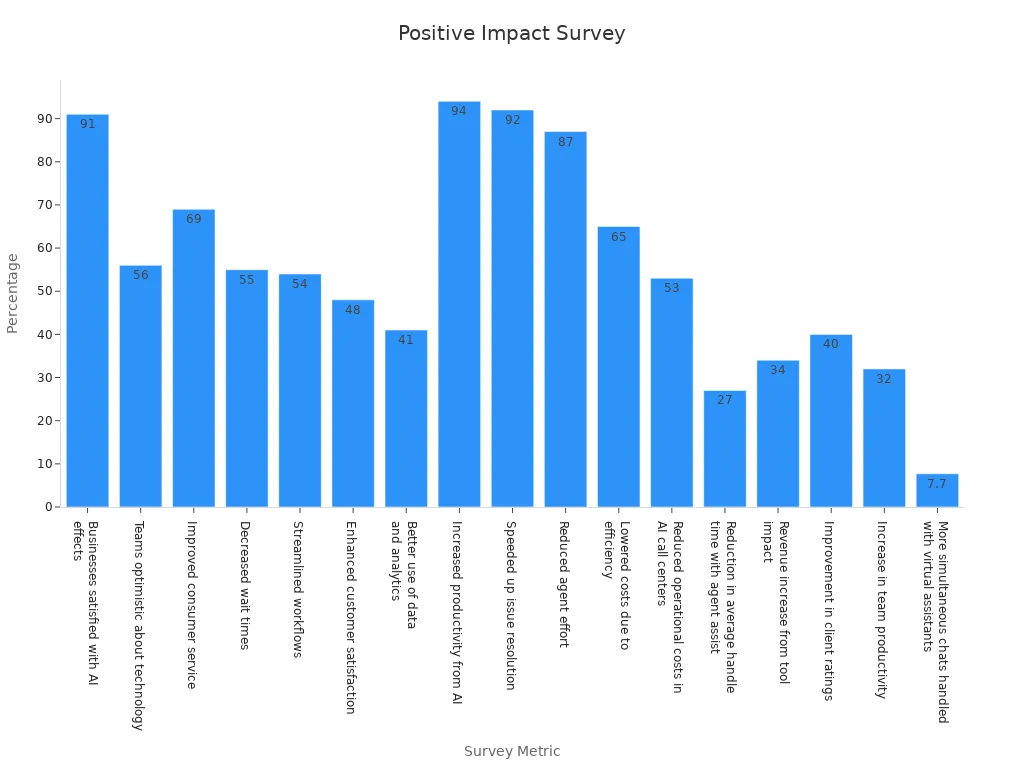Improving Contact Center Agent Performance with Smart Strategies

Contact center performance plays a pivotal role in shaping how customers perceive your brand. Studies reveal that 86% of customers are willing to leave a brand after just two poor experiences, underscoring the importance of maintaining high-quality service. When agents deliver exceptional service, the customer satisfaction score often improves, driving loyalty and repeat business. However, agent attrition rates exceeding 40% in some industries lead to operational inefficiencies and financial losses. With smart strategies like predictive analytics, organizations can enhance customer satisfaction while boosting productivity by up to 30%. Solutions like Sobot’s omnichannel tools further streamline operations, ensuring agents focus on delivering seamless customer experiences.
Identifying Key Challenges in Contact Center Performance
High Agent Turnover and Retention Issues
Agent turnover remains one of the most pressing challenges in contact center management. Studies show that turnover rates in call centers often range between 30% and 40%, with some industries reporting rates as high as 60%. This high attrition impacts contact center productivity, leading to reduced customer satisfaction and lower first-contact resolution rates. The financial implications are equally significant, with up to 25% of annual staff expenses lost due to turnover.
Retention issues often stem from factors like lack of career growth opportunities, inadequate training, and high stress levels. When agents feel unsupported or overwhelmed, they are more likely to leave. Addressing these challenges requires a proactive approach, such as offering personalized coaching, creating clear career paths, and fostering a positive work environment. Solutions like Sobot’s unified workspace can help reduce stress by streamlining processes, enabling agents to focus on delivering exceptional service without unnecessary distractions.
Inadequate Training and Skill Development
Training gaps significantly hinder contact center productivity. Agents who lack proper training often struggle to resolve customer issues efficiently, leading to longer call handling times and lower customer satisfaction scores. Customers frequently express dissatisfaction when agents fail to provide accurate information or solutions.
Investing in comprehensive training programs is essential for improving agent performance. Personalized coaching and continuous learning opportunities not only enhance employee engagement but also reduce turnover rates. Well-trained agents demonstrate higher productivity and effectiveness, contributing to better overall contact center management. Sobot’s AI-powered Voicebot and intelligent IVR systems can complement training efforts by providing agents with real-time insights and support during customer interactions.
Inefficient Workflows and Processes
Inefficient workflows create bottlenecks that negatively affect both agent performance and customer satisfaction. Metrics like average handle time (AHT) and customer satisfaction (CSAT) scores often highlight these inefficiencies. Longer call handling times may indicate gaps in training or outdated systems, while high customer dissatisfaction rates often signal deeper issues within workflows.
Streamlining processes is crucial for reducing wait times and improving operational efficiency. Regular evaluation of performance metrics, such as first contact resolution (FCR) and average speed of answer (ASA), can help identify areas needing improvement. Sobot’s omnichannel solutions offer unified workspaces and automated tools that simplify workflows, enabling agents to handle inquiries more effectively and deliver faster resolutions. By integrating advanced technologies, businesses can optimize their operations and enhance customer experiences.
Low Morale and Agent Burnout
Low morale and burnout among agents can significantly impact contact center performance. Burnout often results from overwhelming workloads, lack of recognition, and insufficient support. When agents experience burnout, their productivity and motivation decline, leading to errors and delays. The table below highlights the effects of burnout on job performance:
| Statistic | Impact |
|---|---|
| Job performance drops | Burnout leads to decreased motivation and productivity |
| Increased mistakes | Employees make more errors due to overwhelming tasks |
| Delays in work | Burnout causes delays in meeting deadlines |
Burnout also affects employee well-being and organizational costs. Studies show that employees experiencing burnout are 63% more likely to take sick days and 50% less likely to discuss performance goals with their managers. This lack of engagement can cost businesses up to $20 million for every 10,000 struggling workers.

To combat burnout, you can implement strategies like flexible scheduling, recognition programs, and access to mental health resources. Sobot’s unified workspace simplifies workflows, reducing stress by allowing agents to manage tasks efficiently. Additionally, tools like Sobot’s AI-powered Voicebot can handle repetitive tasks, freeing agents to focus on meaningful interactions. These solutions not only improve morale but also enhance overall contact center performance.
Meeting Rising Customer Expectations
Customer expectations have evolved significantly in recent years. Today, customers demand personalized experiences, efficient issue resolution, and proactive engagement. Metrics like First Call Resolution (FCR) and Customer Satisfaction Scores (CSAT) have become critical benchmarks. Modern contact centers aim for FCR rates of 80% or higher, as higher rates lead to improved satisfaction and reduced costs.
Customers now expect seamless support across multiple channels, including voice, email, and social media. Omnichannel solutions, like those offered by Sobot, integrate all communication channels into a unified workspace. This ensures agents have access to customer data and interaction history, enabling personalized and efficient service. For example, Sobot’s omnichannel platform allows agents to resolve issues faster by consolidating customer information and automating repetitive tasks.
By meeting these rising expectations, you can enhance customer loyalty and satisfaction. Proactive engagement, such as sending reminders or follow-ups, further strengthens customer relationships. Leveraging advanced tools and strategies ensures your contact center stays ahead in delivering exceptional service.
Smart Strategies to Boost Call Center Agent Performance

Comprehensive Training and Uptraining Programs
Effective agent training is the cornerstone of high call center productivity. Without proper preparation, agents struggle to meet customer expectations, leading to longer resolution times and lower satisfaction scores. Comprehensive training programs equip agents with the skills they need to handle diverse customer inquiries confidently.
Uptraining, or continuous skill development, ensures agents stay updated with new tools, technologies, and customer service trends. For example, participation rates in employee training programs often exceed 80% when organizations prioritize personalized training programs. Metrics like engagement and application rates further highlight the success of these initiatives.
| Metric | Description |
|---|---|
| Participation Rate | Proportion of employees participating in training relative to total eligible employees. |
| Engagement Rate | Evaluates the quality of participation, including active involvement and interest in training content. |
| Completion Rate | Percentage of participants who completed the training program relative to those who started it. |
| Application Rate | Proportion of employees applying skills learned in training to their daily tasks. |
Sobot’s AI-powered Voicebot and intelligent IVR systems enhance agent training by providing real-time insights during customer interactions. These tools act as virtual assistants, guiding agents through complex scenarios and reducing the learning curve. By investing in robust agent training, you can improve agent performance and boost agent productivity across your call center.
Setting Clear Goals and Performance Metrics
Clear goals and measurable performance metrics create a roadmap for success in any call center. When agents understand what is expected of them, they perform better and feel more motivated. The SMART framework—Specific, Measurable, Attainable, Relevant, and Time-bound—provides a reliable structure for setting effective goals.
Organizations that implement systematic goal-setting strategies often see a 39% increase in productivity. When top management supports these efforts, productivity can rise by as much as 57%. Metrics like First Call Resolution (FCR), Average Handle Time (AHT), and Customer Satisfaction (CSAT) scores help track progress and identify areas for improvement.
| Metric | Description | Impact on Performance |
|---|---|---|
| Abandonment Rate | Measures the percentage of contacts that disconnect before reaching an agent. | High rates indicate issues affecting overall agent performance and customer experience. |
| Queue Time | Average time callers wait in the queue before being answered. | Longer queue times correlate with higher abandonment rates, indicating a need for improved staffing and training. |
Sobot’s unified workspace simplifies performance tracking by consolidating data from multiple channels. This allows managers to monitor agent performance in real time and provide actionable feedback. By aligning goals with performance metrics, you can foster a culture of accountability and continuous improvement.
Leveraging Gamification and Incentives
Gamification transforms routine tasks into engaging challenges, motivating agents to excel in their roles. Interactive training modules, point-based systems, and real-time feedback mechanisms are just a few ways to incorporate gamification into your call center. These strategies not only enhance engagement but also improve knowledge retention.
For example:
- A point-based system rewards agents for meeting performance targets, fostering a sense of accomplishment.
- Real-time feedback provides immediate recognition, helping agents adjust and improve quickly.
- Interactive training modules make learning enjoyable, increasing participation and completion rates.
Incentives further boost agent morale. Tangible rewards like gift cards or extra time off encourage agents to exceed expectations. Sobot’s omnichannel solutions support gamification by offering analytics tools that track agent performance and highlight achievements. By combining gamification with meaningful incentives, you can create a motivated workforce that consistently delivers high call center productivity.
Encouraging Collaboration and Peer Learning
Collaboration and peer learning can transform your contact center into a hub of innovation and efficiency. When agents share knowledge and learn from one another, they develop stronger problem-solving skills and improve their overall performance. Peer learning fosters a sense of community, which boosts morale and engagement. This approach also reduces the reliance on formal training sessions, saving time and resources.
Studies highlight the measurable benefits of collaboration in the workplace. The table below summarizes key findings:
| Source | Key Findings |
|---|---|
| How to Measure the ROI of Collaborative Learning | Collaborative learning enhances workplace relationships and aligns with business objectives. |
| Leveraging Peer Groups for Enhanced Learning Outcomes | Peer groups drive leadership development and foster a culture of continuous learning. |
| Peer Learning: 10 Benefits of Peer Collaboration | Interactive methods significantly increase employee engagement and productivity. |
You can encourage collaboration by creating opportunities for agents to work together on challenging cases or share best practices during team meetings. Tools like Sobot’s unified workspace make collaboration seamless by consolidating customer data and communication channels. Agents can access shared resources and learn from each other in real time, improving first-contact resolution rates and customer satisfaction.
Promoting Work-Life Balance and Flexible Scheduling
Work-life balance plays a critical role in maintaining agent productivity and well-being. Flexible scheduling allows agents to manage their personal and professional lives more effectively, reducing stress and burnout. When agents feel supported, they are more likely to stay motivated and deliver exceptional service.
Research shows that flexible work arrangements (FWAs) enhance individual performance by promoting autonomy and accommodating diverse work environments. However, these arrangements require careful planning to avoid challenges like coordination issues within teams. By managing FWAs effectively, you can maximize their benefits while minimizing potential downsides.
Sobot’s solutions, such as the AI-powered Voicebot and intelligent IVR, help you implement flexible scheduling without compromising efficiency. These tools automate repetitive tasks, allowing agents to focus on meaningful interactions during their shifts. Additionally, Sobot’s time zone support ensures your team can provide consistent service to customers worldwide, regardless of their schedules. By prioritizing work-life balance, you can create a healthier, more productive contact center environment.
Leveraging Technology to Enhance Call Center Efficiency

The Role of Sobot's Voice/Call Center in Improving Efficiency

Technology plays a transformative role in improving call center efficiency. Sobot's Voice/Call Center exemplifies this by offering tools that streamline operations and enhance agent productivity. Its intelligent IVR system allows you to customize greetings, build menus, and route calls efficiently. This reduces wait times and ensures customers connect with the right agents. Additionally, the unified workspace consolidates customer data, enabling agents to manage calls and access information seamlessly.
The impact of such technologies is evident in metrics like First Call Resolution (FCR) and Average Handle Time (AHT). For instance, companies using advanced analytics have reduced AHT by 40% and optimized conversion rates by nearly 50%. Sobot's real-time monitoring and analysis tools further empower managers to track performance and make data-driven decisions. These features not only improve efficiency but also enhance customer satisfaction, as seen in Weee!'s success story, where agent efficiency increased by 20% and resolution time dropped by 50%.
| Metric | Improvement |
|---|---|
| Reduction in inbound discussion volume | 20% |
| Increase in positive feedback | 96% |
By adopting Sobot's Voice/Call Center, you can achieve similar results, ensuring your contact center operates at peak efficiency.
Automating Repetitive Tasks with AI and Chatbots
Repetitive tasks often consume valuable time in call centers, reducing overall efficiency. AI and chatbots address this challenge by automating routine processes. Chatbots provide instant responses, automate ticket creation, and categorize inquiries, significantly reducing resolution times. They also offer self-service troubleshooting options, enabling customers to resolve common issues independently.
For example, automation can decrease resolution time for frequent IT issues by fivefold. AI-powered chatbots learn from interactions, improving their ability to deliver personalized assistance. This not only speeds up resolutions but also enhances customer satisfaction. Sobot's AI-powered Voicebot exemplifies this capability by handling repetitive tasks, allowing agents to focus on complex customer needs.
| Metric | Description |
|---|---|
| Call Abandonment Rate | Measures the percentage of calls abandoned before being answered. |
| First Contact Resolution | Indicates the percentage of calls resolved on the first interaction without follow-up. |
| Average Handle Time | The average duration taken to resolve a customer call, including talk and hold time. |
By integrating AI and chatbots, you can streamline customer interactions, reduce handling times, and improve call center efficiency.
Integrating CRM Systems for Streamlined Workflows
Integrated CRM systems are essential for streamlining workflows in modern call centers. They centralize customer data, enabling agents to access interaction histories and provide personalized service. This reduces the time spent switching between systems and improves overall efficiency. For example, Bailey International used CRM to automate customer interactions, achieving a 15% reduction in call-answer times and a 60%-70% decrease in call abandonment rates.
Sobot's Voice/Call Center integrates seamlessly with CRM systems, ensuring agents have all the tools they need in one platform. This integration enhances operational flexibility and reduces costs. Predictive analytics, another key feature, helps forecast call volumes and optimize staffing. By leveraging these technologies, you can improve efficiency and deliver exceptional customer experiences.
| Metric | Description |
|---|---|
| Customer Satisfaction Scores | Reflects the level of satisfaction customers have with the service provided. |
| Employee Satisfaction | Measures how satisfied employees are with their work environment and processes. |
| AI Tools Utilization | Highlights the use of AI in optimizing performance and improving the aforementioned metrics. |
Integrated CRM systems, combined with tools like Sobot's, ensure your call center operates smoothly, meeting customer expectations effectively.
Real-Time Analytics and Performance Monitoring Tools
Real-time analytics and performance monitoring tools are essential for modern contact centers. These tools provide actionable insights that help you make informed decisions, improve agent performance, and enhance customer satisfaction. By tracking key performance indicators (KPIs), you can identify areas for improvement and align your operations with business goals.
One of the most significant advantages of real-time analytics is its ability to offer immediate feedback. For example, if an agent's average handle time (AHT) exceeds the target, managers can intervene promptly to provide coaching or adjust workflows. Similarly, monitoring first call resolution (FCR) rates in real time allows you to address recurring issues before they impact customer satisfaction.
Effective performance monitoring relies on well-defined KPIs. These metrics should align with your business objectives, provide clear targets for measurement, and support data-driven decision-making. The table below highlights some critical KPI categories:
| KPI Category | Description |
|---|---|
| Alignment with Business Goals | KPIs should reflect critical areas like expense management and quality assurance. |
| Clear Targets for Measurement | Setting quantifiable objectives allows for accurate evaluation of progress and team alignment. |
| Data Analysis for Strategic Decisions | Analyzing KPI data can lead to informed decisions that enhance operational effectiveness. |
Sobot's Voice/Call Center offers robust real-time analytics features. With tools like call tracking and data visualization, you can monitor agent performance and customer interactions seamlessly. These insights empower you to optimize workflows, reduce inefficiencies, and improve overall contact center efficiency. For instance, Sobot's real-time monitoring helped Weee! achieve a 50% reduction in resolution time, demonstrating the transformative power of analytics.
By leveraging real-time analytics, you can create a proactive contact center environment. This approach not only boosts agent productivity but also ensures a superior customer experience.
Unified Workspaces for Seamless Agent Operations
Unified workspaces simplify agent operations by consolidating all necessary tools and data into a single platform. This integration eliminates the need to switch between multiple systems, saving time and reducing errors. Agents can access customer interaction histories, manage tickets, and communicate across channels—all from one interface.
The impact of unified workspaces on productivity is well-documented. Traditional setups using email and spreadsheets typically yield a 10-12% productivity increase. In contrast, integrated solutions like Notion or Confluence boost productivity by 15-18%. When paired with advanced tools like Start Motion Media, productivity can soar by up to 37%. These improvements stem from streamlined workflows, faster decision-making, and reduced communication bottlenecks.
| Workspace Setup | Productivity Increase (%) |
|---|---|
| Traditional Tools (Email & Spreadsheets) | 10-12% |
| Integrated Solutions (Evernote/Confluence) | 15-18% |
| Notion + Start Motion Media | 25-37% |
Sobot's unified workspace takes this concept further by integrating voice, chat, and ticketing systems into one platform. This setup allows agents to handle customer inquiries more efficiently, improving first-contact resolution rates and reducing average handle times. For example, Sobot's omnichannel solution enabled Weee! to increase agent efficiency by 20%, showcasing the tangible benefits of a unified workspace.
Unified workspaces also foster collaboration and peer learning. Agents can share insights, access shared resources, and resolve complex issues together. This collaborative environment not only enhances efficiency but also boosts morale and engagement. By adopting a unified workspace, you can transform your contact center into a hub of productivity and innovation.
Measuring and Sustaining Improvements in Agent Performance
Tracking Key Performance Indicators (KPIs)
Tracking key performance indicators (KPIs) is essential for evaluating agent performance and identifying areas for improvement. KPIs provide measurable data that helps you assess how well your contact center is meeting its goals. For example, the quality assurance score evaluates how effectively agents handle customer interactions. Regular coaching sessions and AI-powered speech analytics can improve this score by identifying communication gaps.
Other critical KPIs include adherence to schedule, average after-call work time, and customer feedback ratings. Adherence to schedule ensures agents are available when needed, while reducing after-call work time boosts efficiency. Automating documentation tasks and training agents in time management can significantly enhance these metrics. Customer feedback ratings, gathered through surveys, offer direct insights into customer satisfaction and areas needing attention.
| KPI | Description | Improvement Strategies |
|---|---|---|
| Quality Assurance Score | Evaluates overall performance during customer interactions. | Regular coaching sessions, AI-powered speech analytics. |
| Adherence to Schedule | Measures if agents follow their assigned schedules. | Workforce management software, gamification strategies. |
| Average After Call Work Time | Time spent on tasks related to a call after interaction ends. | Automate documentation tasks, train on time management. |
| Customer Feedback Ratings | Insights from direct customer feedback through surveys. | Train in active listening, empower issue resolution. |
Sobot’s unified workspace simplifies KPI tracking by consolidating data from multiple channels. This allows managers to monitor metrics like first call resolution and call resolution rate in real time, ensuring continuous performance improvement.
Using Customer Feedback for Continuous Improvement
Customer feedback is a powerful tool for driving performance improvement. Metrics like customer satisfaction score (CSAT), net promoter score (NPS), and customer effort score (CES) provide valuable insights into customer experiences. For instance, a high CSAT indicates strong customer retention, while a low CES suggests that customers find it easy to resolve their issues.
- Customer Satisfaction Score (CSAT): Measures customer satisfaction and indicates the likelihood of customer retention.
- Net Promoter Score (NPS): Assesses customer loyalty and the likelihood of customers recommending your service.
- Customer Effort Score (CES): Evaluates the effort required by customers to resolve their issues, impacting overall satisfaction.
Sobot’s AI-powered Voicebot enhances customer feedback collection by automating surveys and analyzing responses. This enables you to identify trends and implement targeted improvements. For example, if feedback highlights delays in issue resolution, you can adjust workflows to improve the call resolution rate.
Regular Performance Reviews and Coaching
Regular performance reviews and coaching sessions are vital for sustaining agent performance. Reviews provide an opportunity to evaluate progress, set new goals, and address challenges. Coaching, on the other hand, focuses on skill development and motivation. The GROW model, which emphasizes Goal, Reality, Options, and Will, has proven effective in corporate settings since the 1980s.
| Coaching Model | Description | Effectiveness |
|---|---|---|
| GROW Model | A structured approach focusing on Goal, Reality, Options, and Will. | Proven effective in corporate settings since the late 1980s. |
| Continuous Feedback | Ongoing performance management that fosters a high-performance culture. | Enhances productivity and employee capability. |
Effective coaching involves collaboration between managers and agents. Managers act as mentors, providing guidance and encouragement. Sobot’s real-time analytics tools support this process by offering actionable insights during feedback sessions. These tools help managers identify specific areas for improvement, ensuring coaching sessions are targeted and impactful.
Updating Training Programs Based on Emerging Trends
Emerging trends in technology and customer behavior demand regular updates to your training programs. Staying ahead ensures your agents remain proficient and confident in handling evolving customer needs. Key trends shaping contact center training include AI, automation, cloud migration, and social media integration. These trends not only improve efficiency but also enhance customer satisfaction.
| Trend | Description |
|---|---|
| AI and Automation | Significant rise in AI usage, enhancing customer interactions and reducing live support needs. |
| Cloud Migration | Transitioning to cloud-based solutions for better scalability and flexibility. |
| Social Media Integration | Incorporating social media channels for improved customer engagement and support. |
| Continuous Training | Ongoing development programs to ensure agents are proficient with new technologies and tools. |
Continuous training is critical for maintaining agent proficiency. It boosts confidence and ensures agents can effectively use new tools. Customized training programs also lead to better performance outcomes, as shown in the table below:
| Aspect | Importance |
|---|---|
| Agent Proficiency | Continuous training boosts agent confidence and effectiveness in using new tools. |
| Performance Improvement | Customized training leads to higher performance levels and better customer service outcomes. |
For example, 79% of companies plan to increase investment in AI and automation within the next year. Without these updates, 52% of customer experience professionals believe customer satisfaction will decline. Sobot’s AI-powered Voicebot and intelligent IVR systems can support your training efforts by providing real-time insights during customer interactions. These tools help agents adapt to new technologies while improving their efficiency and confidence.
Monitoring Agent Satisfaction and Engagement
Monitoring agent satisfaction and engagement is essential for maintaining a productive and motivated workforce. Satisfied agents are more likely to deliver exceptional customer service, reducing turnover and improving overall performance. You can use several quantitative measures to track satisfaction and engagement effectively:
- Employee Satisfaction Surveys: Regular surveys gauge overall satisfaction levels among employees.
- Employee Net Promoter Score (eNPS): Measures the likelihood of employees recommending your organization as a good workplace.
- Employee Turnover Rate: Tracks the percentage of employees leaving, indicating potential engagement issues.
- Retention Rate: Measures the percentage of employees staying, reflecting engagement levels.
- Attendance and Punctuality: Identifies potential disengagement through attendance records.
- Performance Reviews: Highlights trends related to engagement through performance data.
- Employee Recognition and Awards: Evaluates the impact of recognition programs on engagement.
- Peer-to-Peer Recognition: Tracks instances of peer recognition, indicating a supportive environment.
- Training and Development Participation: Measures participation in development programs as an engagement indicator.
- Manager-Employee Relationships: Assesses the quality of relationships, reflecting engagement levels.
Sobot’s unified workspace simplifies tracking these metrics by consolidating data from multiple channels. For example, pulse surveys and eNPS scores can be integrated into the platform, providing real-time insights into agent satisfaction. By addressing areas of concern promptly, you can foster a positive work environment that motivates agents to excel.
Balancing Efficiency with Agent Satisfaction
Avoiding Unrealistic Workload Expectations
Unrealistic workloads often lead to frustration and burnout among agents. When tasks pile up without proper prioritization, agents struggle to meet deadlines, creating bottlenecks that slow down team performance. Strategic planning tools, such as task time analysis and capacity dashboards, help you set realistic expectations. For example, time-tracking software provides insights into how long tasks typically take, allowing you to establish achievable deadlines based on actual data. This approach fosters a supportive work environment and reduces stress.
Sobot’s unified workspace simplifies task management by consolidating customer data and communication channels into one platform. Agents can access relevant information quickly, reducing the time spent switching between systems. By aligning workload expectations with employee capacity, you create a balanced environment that enhances productivity and prevents burnout.
Providing Career Growth Opportunities
Career growth opportunities play a vital role in retaining skilled agents and boosting morale. Training programs not only enhance employee satisfaction but also reduce hiring costs by promoting from within. When agents see clear career paths, they feel valued and motivated to excel. Mentorship programs further support internal growth, helping agents develop leadership skills and gain confidence.
Sobot’s AI-powered Voicebot and intelligent IVR systems provide agents with tools to improve their skills during customer interactions. These technologies act as virtual assistants, guiding agents through complex scenarios and reducing the learning curve. By investing in continuous training and offering promotions, you create a culture of recognition and growth that benefits both agents and your business.
Celebrating Successes and Milestones
Recognizing achievements and milestones boosts morale and strengthens team bonds. Celebrations, whether for promotions, years of service, or personal milestones like birthdays, show appreciation for hard work and foster loyalty. For example, The Cheesecake Factory’s week-long employee appreciation events highlight the importance of creating a high-trust workplace.
You can implement similar practices in your contact center. Organize team lunches to celebrate monthly performance goals or send personalized notes to recognize individual contributions. Sobot’s analytics tools make it easy to track agent achievements, ensuring no milestone goes unnoticed. Regular celebrations encourage a positive workplace culture, improve collaboration, and enhance employee retention.
By balancing efficiency with agent satisfaction, you create a thriving contact center environment that delivers exceptional service and sustainable business outcomes.
Building a Positive and Supportive Work Environment
Creating a positive and supportive work environment is essential for improving agent performance and overall contact center efficiency. When employees feel valued and supported, they are more likely to stay engaged and motivated. This directly impacts productivity, customer satisfaction, and even your bottom line.
A well-designed workplace fosters collaboration, reduces stress, and enhances job satisfaction. The table below highlights the benefits of a positive work environment:
| Benefit | Description |
|---|---|
| Increased productivity | Employees in attractive, well-designed workplaces are more productive. |
| Happier employees | Positive environments lead to higher productivity and job satisfaction. |
| Reduced employee turnover | Engaged employees are more likely to stay, reducing recruitment costs. |
| Enhanced team collaboration | Open communication and trust lead to better teamwork and productivity. |
| Improved customer experience | Happy employees provide exceptional service, enhancing customer loyalty. |
You can create this environment by investing in updated tools, recognizing achievements, and fostering a culture of respect. For example, Sobot’s unified workspace simplifies workflows, reducing stress and allowing agents to focus on meaningful tasks. This not only boosts morale but also enhances operational efficiency.
Encouraging Open Communication and Feedback
Open communication and constructive feedback are the cornerstones of a thriving contact center. When agents feel heard, they are more likely to share ideas, address challenges, and improve their performance. Strong communication skills also enhance team alignment and workplace productivity.
Here are some key ways open communication benefits your team:
- Helps employees understand their current standing and areas for improvement.
- Acknowledges employee skills while identifying areas needing development.
- Improves team efficiency and alignment, leading to better customer experiences.
Day-to-day conversations and follow-up surveys can uncover valuable insights into employee needs. For instance, Sobot’s real-time analytics tools provide actionable data, enabling managers to offer targeted feedback. This approach ensures agents feel supported and empowered to excel in their roles.
By fostering a culture of open communication, you can build trust, enhance collaboration, and drive continuous improvement in your contact center.
Improving contact center agent performance is essential for delivering exceptional customer experiences and driving business success. By adopting smart strategies like comprehensive training, gamification, and leveraging advanced tools such as Sobot's Voice/Call Center, you can enhance both efficiency and satisfaction. For instance, AI-driven coaching improves agent performance by 25%, while chatbots handle up to 70% of Tier 1 inquiries, reducing workloads.
A 2023 study revealed that fully integrated contact centers saw a 12% increase in customer retention, highlighting the value of these approaches.

Implement these strategies today to create a thriving, efficient contact center that meets rising customer expectations.
FAQ
What are the key benefits of using Sobot's Voice/Call Center?
Sobot's Voice/Call Center enhances efficiency with features like intelligent IVR, real-time analytics, and a unified workspace. These tools reduce average handle time (AHT) by up to 40% and improve first-call resolution (FCR) rates. Businesses also benefit from global number availability and seamless CRM integration. Learn more.
How can AI-powered tools improve agent performance?
AI-powered tools like Sobot's Voicebot automate repetitive tasks, provide real-time insights, and assist agents during calls. These tools reduce agent workload and improve accuracy. For example, chatbots handle up to 70% of Tier 1 inquiries, allowing agents to focus on complex issues and boosting productivity.
Why is a unified workspace important for contact centers?
A unified workspace consolidates customer data, communication channels, and tools into one platform. This reduces system switching, saving agents time and minimizing errors. Sobot's unified workspace improves agent efficiency by 20%, as seen in Weee!'s success story, where resolution time dropped by 50%.
How does Sobot ensure data security in its solutions?
Sobot prioritizes data security with encrypted data transfer, secure dialing, and a 99.99% system uptime. These measures protect sensitive customer information and ensure reliable operations. The platform complies with global security standards, making it a trusted choice for businesses worldwide.
What industries benefit most from Sobot's solutions?
Sobot serves diverse industries, including retail, financial services, gaming, and education. For example, Weee!, an online supermarket, improved agent efficiency by 20% using Sobot's Voice/Call Center. The platform's flexibility and scalability make it suitable for businesses of all sizes and sectors.
See Also
Enhancing Call Center Efficiency Through Effective Monitoring
Top Strategies for Effective Call Center Quality Management
Understanding the Efficiency of Call Center Automation
Effective Strategies for Managing Live Chat Representatives
A Ten-Step Approach to Omnichannel Contact Center Implementation
